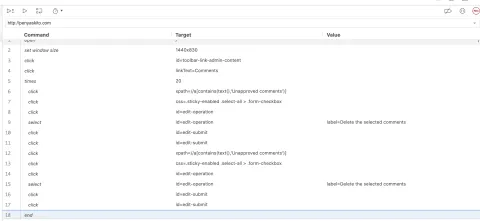Welcome to just another blog with complex infrastructure for just a few visits. It was about time.
This post was intended to be a detailed guide about how I used Drupal migrate tools for upgrading from D7 to D9, but, being fair, it was quite straight forward, so I will just share some tips. Take into account that my last attempt to blog lost its pace quite fast, so I could have been migrating it manually and probably had saved some time. But as someone who contributed to the migrate initiative and the Drupal to Drupal migrations, it's quite a shame that I never actually used it in a real project.
My source site was a D7 site using the blog module, which has been removed from core in D8. I could just use the contributed version linked above, but I wanted to use an "article" content type from now on. Instead of creating a custom migration, I thought I would give a chance to the Drupal Migrate UI.
So even if we are not using a custom migration and we don't have to think about content mapping and such, there is basic cue that you need to take into account: upgrading your site is the best time for taking the trash out.
Upgrading your site is the best time for taking the trash out. E.g. delete spam.
So first steps would be removing spam. I had used a free Mollom account in the past (RIP, thanks for your service), but I didn't rethink my spam prevention strategy when it was discontinued. Thousands of comments and registered users were in my database, and that was slowing down a lot my first attempts to migrate. I hacked Drupal 7 so the comment and user forms filtered data that I was sure it was spam by altering their queries, and allowing me to delete more content at once. Then I recorded with Selenium IDE some automation for deleting those, as even if scripting or some SQL queries might be faster, sometimes I just enjoy watching the browser do stuff for me.
After that, the process was mostly straightforward. Install Drupal Migrate UI and its dependencies, follow the process and complete. But your content after the migration needs to be audited, so you didn't miss content or config in the process. Specially since the Drupal upgrade process doesn't support rollbacks yet (don't worry if you have your custom migrations, in that case it's supported).
Audit your content after your migration. You might have missed something.
In my case, I had to restart again as my multilingual content was not being migrated. I quickly figured out that the settings must be in place before your content is migrated. Install the multilingual modules if that's your case, and review your translation strategy and the related content translation settings before migrating, e.g. content types and taxonomies.
If you have multilingual content, review your strategy and according settings before upgrading.
In my case, I had used tags in Spanish and English, and those were not mapped to each other when they were the same concept in the source site. From now on, and thanks to the vast improvements in multilingual support from D8 on, I wanted to change that. I did those mappings by hand, and here we are.
I picked the new experimental Olivero theme and the new experimental Claro admin theme because they look great, but also because testing them is a good way of helping out them move forward.
I leave for another moment my choice of contrib modules for the site, some issues I needed to workaround by a small custom module, and my infrastructure setup based in docker containers. I promise that I will make that happen before another ton of years pass.

Comments1
Looking good!
The Olivero theme is becoming rather popular for blogs!